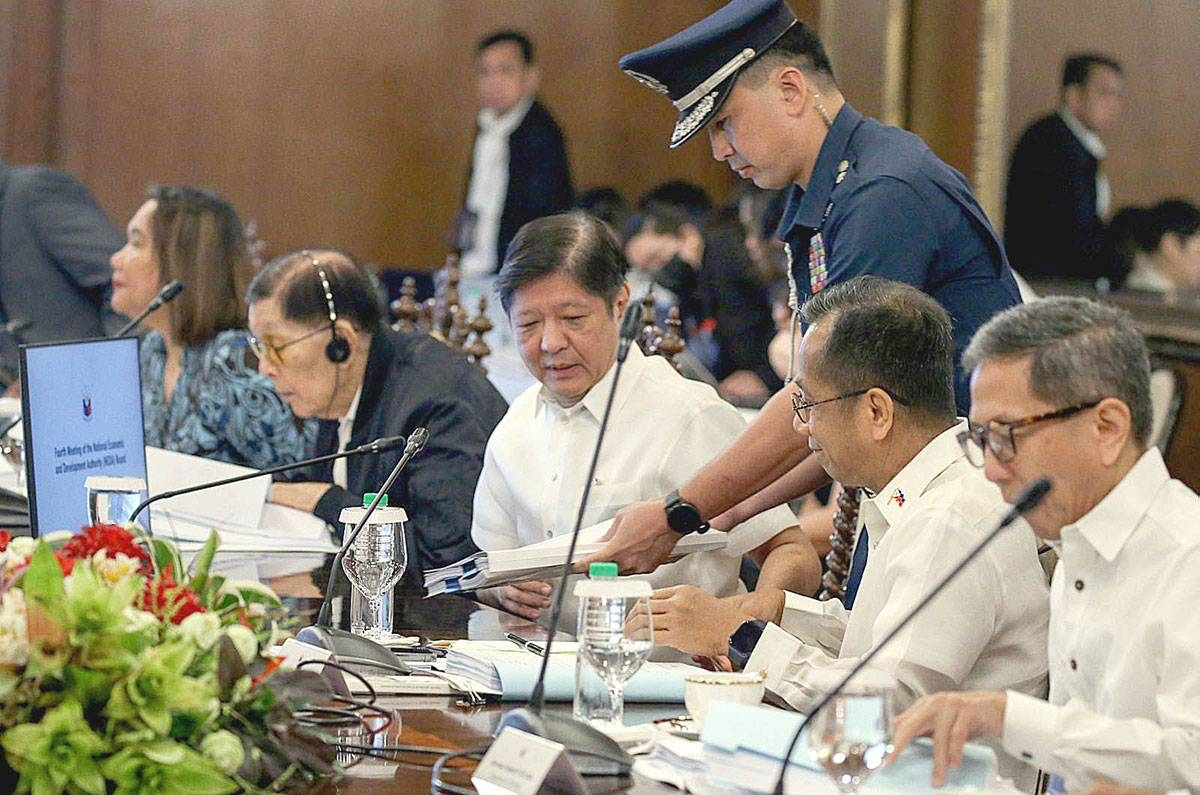NEDA meet President Ferdinand Marcos Jr. presides over the NEDA board meeting in Malacañang on Thursday, March 9, 2023. During the meeting, 194 priority projects were approved. CONTRIBUTED PHOTO
The National Economic and Development Authority (NEDA) Board, with President Ferdinand Marcos Jr. at the helm, has green-lighted 194 high-impact priority projects under the Infrastructure Flagship Projects (IFPs). It also approved amendments to the 2013 Joint Venture (JV) Guidelines that are seen to further strengthen the government’s “Build Better More” program.
NEDA Director-General Arsenio Balisacan said the new IFP list and the amendments to the JV guidelines will improve the country’s competitiveness and make it a prime investment destination in the region.
The new IFP list mentions 194 projects totaling around P9 trillion, the bulk of which are in irrigation, water supply and flood management.
It also includes projects in digital connectivity, health, power and energy, agriculture and other infrastructure.
“We will connect and integrate markets to enable access to more opportunities for local industries, enhance the productivity of our young and vibrant labor force, and create safer infrastructure for future generations,” Balisacan said at a press briefing in Malacañang on Thursday.
“Ultimately, we wish to improve the overall quality of life of all Filipinos and empower every citizen to live a stable, prosperous, and tranquil life,” he added.
Some of the new projects included in the list are the Panay Railway Project, Mindanao Railway Project 3, North Long Haul Railway, San Mateo Railway, UP-PGH Diliman Project, the NAIA or Ninoy Aquino International Airport Rehabilitation Project, Ilocos Sur Transbasin Project and the Metro Cebu Expressway. These initiatives are aligned with the present administration’s 8-Point Socioeconomic Agenda as outlined in the Philippine Development Plan for 2023-2028.
“These high-impact and urgently-needed infrastructure projects aim to showcase the government’s Build Better More program,” stated the official.
The new IFPs are seen to address the constraints to business investment and expansion and will create more high-quality and resilient jobs that will allow the Philippines to meet its poverty-reduction goals for the medium term. These will also be among the priorities under the government’s annual budget preparation.
The aforementioned projects will adopt an optimal mix of financing from various development partners or Official Development Assistance, the national government or the General Appropriations and the private sector or the public-private partnerships (PPPs).
Forty-five of the 194 new IFPs will be financed through partnerships with the private sector.
To hasten their rollout, Balisacan said the Marcos administration is strongly promoting the utilization of PPPs, which he said is “one of the cross-cutting strategies likewise identified in the Philippine Development Plan 2023-2028.”
“The government shall harness the financial and technical resources of the private sector, which allows the public sector to allocate its funds for greater investments in human capital development, especially to address the scarring in health and education due to the pandemic and provide targeted assistance that protects vulnerable sectors from economic shocks,” he said.
“Recognizing that our country has much work to do to catch up with our dynamic neighbors in the region, we will pursue high-impact initiatives that aim to encourage greater local and foreign investment and private sector participation in infrastructure development,” Balisacan said.

